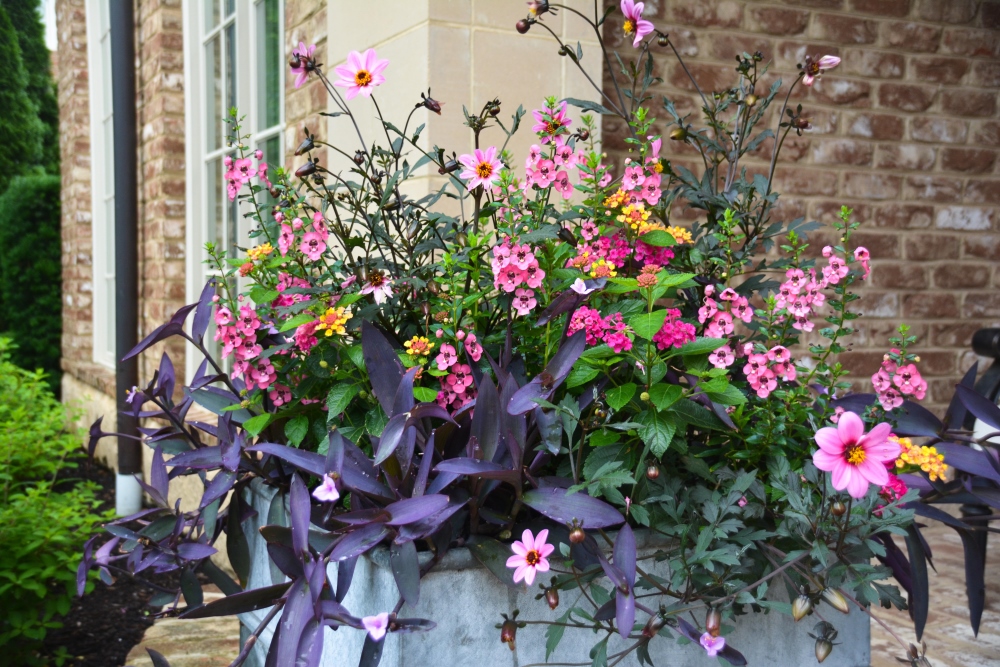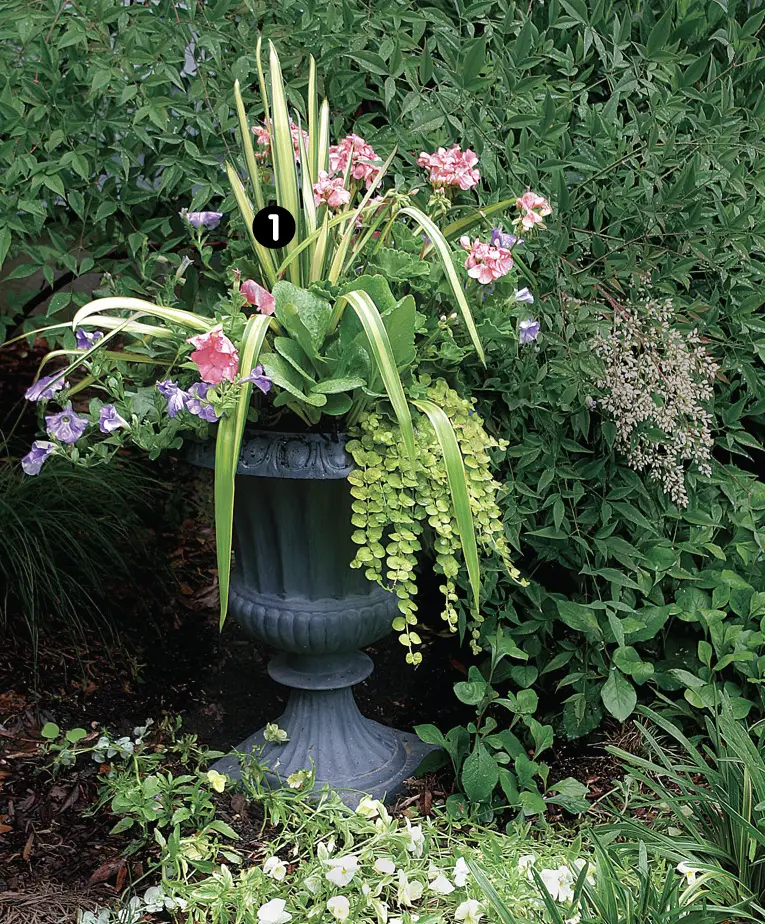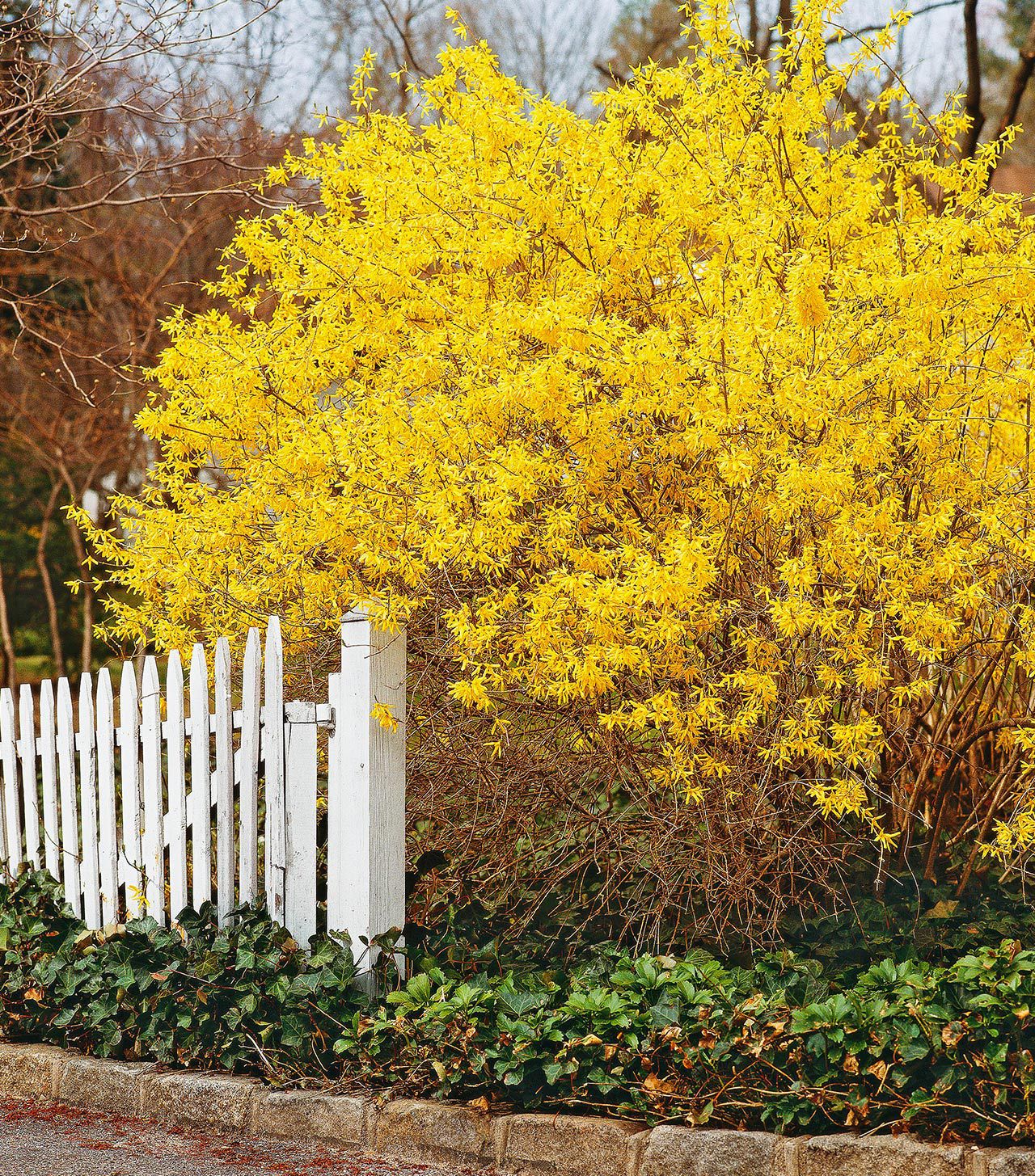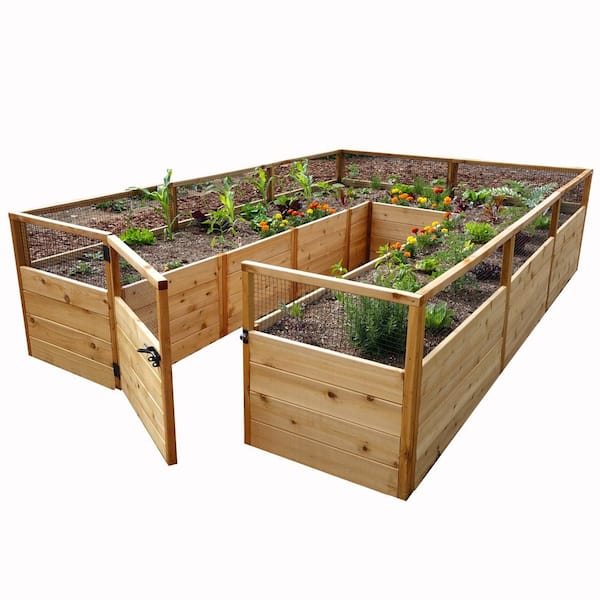Best plants for container gardening include herbs like basil and flowers like petunias. Vegetables like tomatoes also thrive in containers.
Container gardening is a versatile and efficient way to grow plants, especially in limited spaces. It allows you to cultivate a variety of plants, including herbs, flowers, and vegetables. This gardening method is perfect for urban dwellers and those with limited backyard space.
Containers can be placed on balconies, patios, or windowsills, bringing greenery into your living spaces. With the right choice of plants and proper care, container gardens can be lush and productive. Consider factors like sunlight, water needs, and container size to ensure your plants thrive. Container gardening offers flexibility and convenience, making it accessible for everyone.
Introduction To Container Gardening
Container gardening is a fun and easy way to grow plants. You can use pots, boxes, and other containers. It’s perfect for small spaces and urban living. You can place containers on balconies, patios, and even windowsills. This type of gardening allows you to grow a variety of plants, from flowers to vegetables.
Benefits Of Container Gardening
There are many benefits to container gardening. Here are some of the key advantages:
- Space-Saving: You can garden even in small areas.
- Flexibility: Move containers to catch the best sunlight.
- Pest Control: Easier to manage pests and diseases.
- Accessibility: Great for people with limited mobility.
- Variety: Grow different types of plants in one area.
Choosing The Right Containers
Picking the right container is crucial for plant health. Consider these factors:
| Factor | Details |
|---|---|
| Size | Ensure the container is large enough for root growth. |
| Material | Choose from plastic, clay, wood, or metal. |
| Drainage | Ensure containers have drainage holes. |
| Weight | Consider the weight when filled with soil and water. |
Containers come in various shapes and sizes. Use your creativity to select the best ones for your space. Make sure they match your aesthetic preferences and gardening needs.

Credit: www.finegardening.com
Essential Supplies
Container gardening is a delightful way to bring greenery to small spaces. To start, gather the essential supplies. These tools and materials ensure your plants thrive.
Soil And Fertilizer
Good soil is crucial for container gardening. Use a high-quality potting mix. This mix provides the right nutrients and drainage. Avoid garden soil, as it can compact in pots.
Fertilizers keep your plants healthy. Choose a balanced fertilizer for most plants. For flowering plants, use a bloom booster fertilizer. Follow the instructions on the package to avoid over-fertilizing.
| Type of Plant | Recommended Fertilizer |
|---|---|
| Vegetables | Balanced fertilizer (e.g., 10-10-10) |
| Flowering Plants | Bloom booster fertilizer |
| Herbs | Organic fertilizer |
Watering Tools
Proper watering is key for container plants. A watering can with a narrow spout helps control the flow. This avoids over-watering and keeps the soil moist.
For larger containers, consider a hose with a spray nozzle. The spray nozzle allows gentle watering. This prevents soil erosion and plant damage.
A moisture meter can help you check soil moisture levels. It ensures you water your plants at the right time. Too much water can harm the roots.
- Watering can: For precise watering
- Spray nozzle hose: For gentle watering
- Moisture meter: To monitor soil moisture
Top Plants For Beginners
Container gardening is perfect for beginners. It offers flexibility and easy maintenance. Choosing the right plants can ensure success and joy. Here are some top plants for beginners.
Herbs And Spices
Herbs are perfect for container gardening. They are easy to grow and maintain. Plus, they add flavor to your meals.
| Herb | Light Needs | Water Needs |
|---|---|---|
| Basil | Full Sun | Moderate |
| Mint | Partial Shade | High |
| Rosemary | Full Sun | Low |
Herbs like basil, mint, and rosemary thrive in containers. Basil needs full sun and moderate watering. Mint prefers partial shade and high water. Rosemary loves full sun and needs little water.
Easy-care Flowers
Flowers brighten any space. Easy-care flowers are perfect for beginners.
- Marigolds: Full sun, moderate water
- Pansies: Partial shade, moderate water
- Petunias: Full sun, moderate water
Marigolds are colorful and easy to grow. They need full sun and moderate water. Pansies thrive in partial shade and need moderate water. Petunias love full sun and require moderate watering.
Choosing these plants ensures a beautiful, low-maintenance garden. Enjoy your container gardening journey!
Edible Container Gardens
Edible container gardens are perfect for small spaces. You can grow your own food even with limited space. This guide will show you the best plants for container gardening. We will focus on vegetables and fruits.
Vegetables
Growing vegetables in containers is fun. It also provides fresh food. Some vegetables are perfect for small spaces.
| Vegetable | Container Size | Growing Tips |
|---|---|---|
| Tomatoes | 5-gallon bucket | Use a sunny spot and water regularly. |
| Carrots | 12-inch deep pot | Choose deep pots for long roots. |
| Lettuce | Shallow container | Keep soil moist for best growth. |
Fruits
You can also grow fruits in containers. They need more care but are very rewarding.
- Strawberries: Use hanging baskets. They need full sun.
- Lemon Trees: Plant in large pots. They need lots of light.
- Blueberries: Use acidic soil. They prefer full sun or partial shade.
Designing Your Container Garden
Designing your container garden can be a fun and creative process. With some planning, you can create a beautiful and thriving garden. The key is to choose the right plants and arrange them thoughtfully. This section will guide you through color combinations and vertical gardening.
Color Combinations
Using the right color combinations can make your container garden pop. Here are some tips:
- Complementary Colors: Pair colors opposite each other on the color wheel. For example, blue and orange or red and green.
- Analogous Colors: Use colors next to each other on the color wheel. Think yellow, orange, and red.
- Monochromatic Colors: Use different shades of the same color. This creates a harmonious and soothing look.
Mixing plants with different foliage colors can add depth. For instance, combine green leaves with purple or silver ones. This adds visual interest to your garden.
Vertical Gardening
Vertical gardening is a great way to save space. It allows you to grow more plants in a small area. Here are some ideas:
- Trellises: Use trellises for climbing plants like beans and peas.
- Hanging Baskets: Perfect for trailing plants like strawberries and ivy.
- Wall Planters: Attach planters to walls for herbs and small flowers.
Vertical gardening can also add height to your garden. This makes it more visually appealing. Use a mix of heights to create layers.
| Plant | Best Use |
|---|---|
| Beans | Climbing on trellises |
| Strawberries | Hanging baskets |
| Herbs | Wall planters |
By using color combinations and vertical gardening, you can maximize your space. Your container garden will be both beautiful and functional.
Caring For Your Plants
Container gardening requires proper care to ensure plant health. This involves watering, pest control, and other essential tasks. Let’s explore some of the best practices for maintaining your container plants.
Watering Tips
Watering is crucial for container plants. Containers dry out faster than garden beds. Here are some simple watering tips:
- Check soil moisture daily.
- Water when the top inch feels dry.
- Use a watering can with a narrow spout.
- Water in the morning to prevent diseases.
- Ensure pots have drainage holes.
Pest Control
Pests can harm your container plants. Keep them healthy and pest-free with these tips:
- Inspect plants regularly for pests.
- Remove any visible pests by hand.
- Use insecticidal soap for mild infestations.
- Keep plants healthy with proper fertilization.
- Isolate new plants to prevent spreading pests.
| Pest | Signs | Control Methods |
|---|---|---|
| Aphids | Sticky residue on leaves | Spray with water or use neem oil |
| Spider mites | Webbing on plants | Insecticidal soap or miticide |
| Whiteflies | White insects flying around plants | Yellow sticky traps or insecticidal soap |
Seasonal Planting Ideas
Container gardening offers flexibility and variety throughout the year. Each season brings unique planting opportunities. Discover the best plants for your containers during each season below.
Spring And Summer
Spring and summer are ideal for vibrant, blooming plants. These seasons bring warmth and sunshine, perfect for growth.
| Plant | Light Requirements | Watering Needs |
|---|---|---|
| Geraniums | Full Sun | Moderate |
| Petunias | Full Sun | Moderate |
| Begonias | Partial Shade | Low |
Herbs also thrive in spring and summer. Consider planting:
- Basil
- Mint
- Thyme
These herbs need full sun and moderate water. They add fresh flavors to your dishes.
Fall And Winter
Fall and winter require hardy plants. Cooler temperatures and less sunlight demand resilience.
| Plant | Light Requirements | Watering Needs |
|---|---|---|
| Pansies | Partial Sun | Moderate |
| Kale | Full Sun | Low |
| Ornamental Cabbage | Full Sun | Low |
For a splash of color, try planting:
- Winter Jasmine
- Holly
- Camellias
These plants add life to your containers even in the cold months. They need partial sun and minimal watering.
Adapt your container garden to the seasons for year-round beauty and enjoyment. Choose the right plants and follow these tips for a flourishing container garden.

Credit: thinkingoutsidetheboxwood.com
Troubleshooting Common Issues
Container gardening can be rewarding, but it comes with challenges. Knowing how to tackle these issues ensures thriving plants. Let’s dive into some common problems and their solutions.
Overwatering
Overwatering is a common problem in container gardening. Plants need the right amount of water to thrive. Too much water can cause root rot and other issues.
- Signs of Overwatering:
- Yellowing leaves
- Mushy stems
- Moldy soil
Prevent overwatering by using well-draining soil. Ensure your containers have drainage holes. Water plants only when the top inch of soil is dry.
| Problem | Solution |
|---|---|
| Yellowing leaves | Check soil moisture before watering |
| Mushy stems | Improve drainage by adding sand or perlite |
| Moldy soil | Allow soil to dry out between waterings |
Nutrient Deficiencies
Plants in containers depend on you for nutrients. Nutrient deficiencies can lead to poor growth and health.
- Common Nutrient Deficiencies:
- Nitrogen – Yellowing older leaves
- Phosphorus – Stunted growth and dark leaves
- Potassium – Brown leaf edges
Use a balanced fertilizer to prevent deficiencies. Follow the instructions on the fertilizer package. Regularly check your plants for signs of nutrient deficiencies.
To address specific deficiencies:
| Deficiency | Solution |
|---|---|
| Nitrogen | Use a nitrogen-rich fertilizer |
| Phosphorus | Add bone meal or fish fertilizer |
| Potassium | Use a potassium-rich fertilizer |

Credit: www.portcarlinggardencentre.com
Frequently Asked Questions
What Are The Best Plants For Container Gardening?
Herbs, succulents, and annuals are great for container gardening. They thrive in small spaces and need little maintenance.
How Often Should I Water Container Plants?
Watering depends on the plant type and weather. Generally, check the soil daily and water when it’s dry.
Can Vegetables Grow In Containers?
Yes, many vegetables like tomatoes, peppers, and lettuce grow well in containers. They just need adequate sunlight and water.
Do Container Plants Need Special Soil?
Yes, use a high-quality potting mix for container plants. Avoid garden soil, as it’s too heavy and lacks nutrients.
Conclusion
Container gardening offers endless possibilities for plant enthusiasts. Choose the right plants for vibrant and thriving containers. Experiment with different combinations to create stunning displays. Enjoy the flexibility and beauty of container gardening. Happy gardening!




